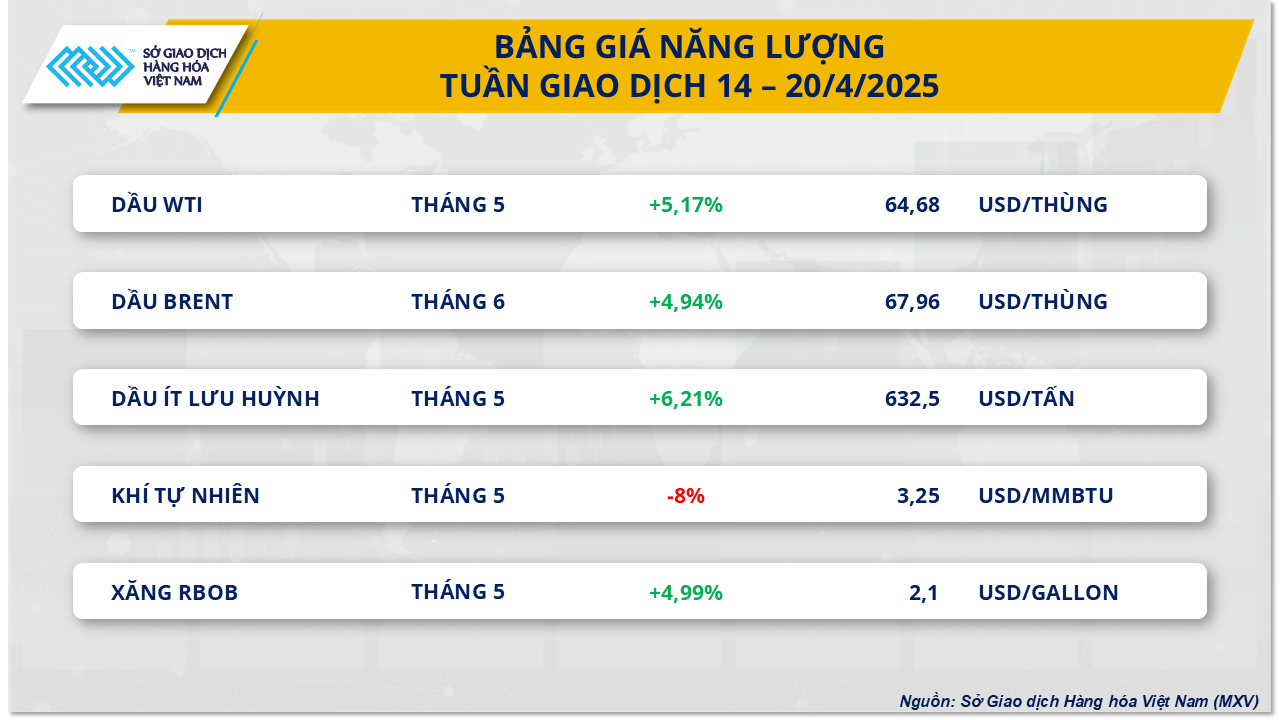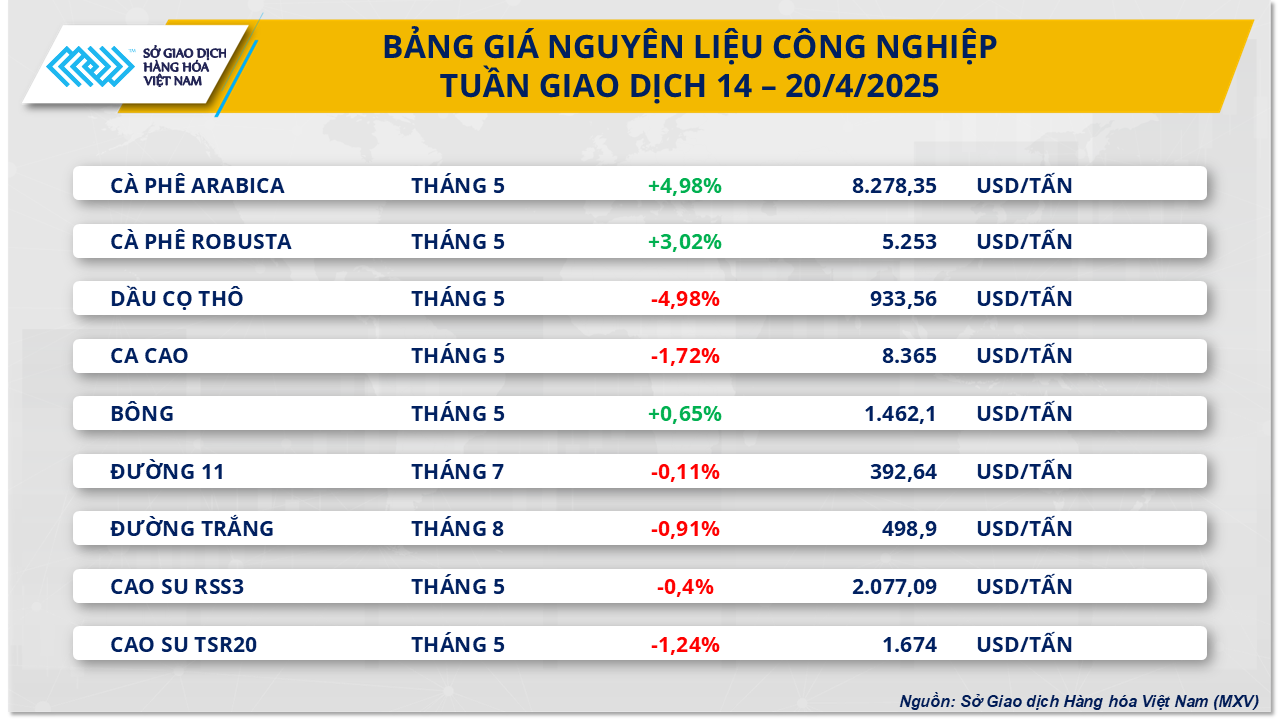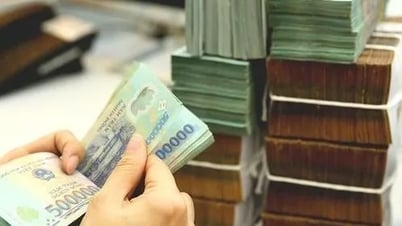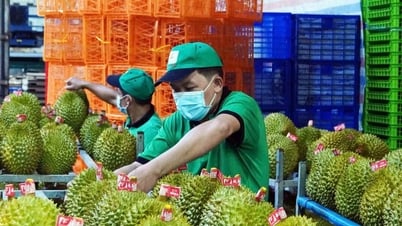In the energy market, according to MXV, the energy market continued to attract attention as it led the overall market's growth. Prices of 4 out of 5 commodities increased sharply by 4-6% compared to last week. Of which, two crude oil commodities increased by about 5% in the context of the market gradually adapting to the new US tariff policies and concerns about supply since the end of March have returned.
On Friday, April 18, the NYMEX and ICE EU exchanges were closed for the holiday, so the prices of Brent and WTI crude oil stopped at $67.96/barrel and $64.68/barrel respectively when they closed on Thursday (April 17). This was also the trading session with the strongest price increase of the week after the meeting between US President Donald Trump and Italian Prime Minister Giorgia Meloni at the White House. Optimistic statements from both heads of state about the possibility of reaching a new trade agreement between the US and the European Union (EU) reheated the market.
While Prime Minister Meloni remains cautious and waits for new dialogue between the EU and its members and the US in the future, President Trump has expressed confidence not only in a new trade deal with the EU but also in new agreements with other major trading partners. This optimism has helped to partly erase concerns about market instability that could cause a drop in oil demand, thereby creating momentum for oil price recovery.
Meanwhile, concerns about oil supplies have returned as the US tightened sanctions on Iranian and Venezuelan crude oil and OPEC+ announced a plan to cut production.
Source: MXV
On April 16, the US Treasury Department announced new sanctions against Iran. Despite positive responses from both sides after the first round of talks in Oman and looking forward to the second round of talks in Italy this past weekend, in its statement, the US Treasury Department said that President Trump had requested to restart the campaign of “maximum pressure” on Iran after statements from representatives of both sides expressing disagreement over Tehran’s nuclear program.
The new sanctions include a Chinese “teapot” refinery, as well as companies and vessels accused of facilitating the transport of Iranian crude. Venezuelan crude exports have also been severely affected by the sanctions announced by the White House on March 24. Foreign joint venture partners of Venezuela’s state oil company PDVSA have been ordered by both the US government and PDVSA to stop exporting crude and related products.
Crude oil supplies from OPEC+ countries may also be in short supply following the plan to cut excess production announced on April 16. According to this plan; monthly cuts will range from 196,000 barrels/day to 520,000 barrels/day from now until June 2026; increasing the production cuts by 369,000 barrels/day compared to the previous plan announced on March 20; with two prominent countries continuing to be Iraq and Kazakhstan.
For the industrial raw material group , at the end of the last trading week, the prices of two coffee products reversed to increase after three consecutive weeks of decline. Closing the session on Thursday, the price of Arabica coffee reached 8,278 USD/ton, up 4.98% compared to the reference price; the price of Robusta coffee increased 3.02% compared to the price of last week, recovering to 5,253 USD/ton. The coffee market was temporarily closed on Friday to prepare for Easter.
Source: MXV
According to MXV, after being affected by tariffs, the prices of the two coffee products have recovered significantly. According to Cecafe, Conillion (Robusta) coffee exports in March continued to decline since August last year, only 61% compared to February and down more than 5 times compared to the same period last year. During the week, the NCDT report showed that coffee surpassed bottled water to take the number one position, being the most consumed beverage in the US with an average of 3 cups per day. In addition, the Real/USD exchange rate has increased by 6.1% since the beginning of the year, reducing the motivation for Brazilian coffee exports.
MXV believes that the coffee market is currently in a state of backwardation, when the price of the near-term standard futures contract is higher than the price of the far-term standard futures contract. The COT Arabica index on the ICE New York floor shows that the net position of the Managed money group (hedge fund) in the market announced on April 15 continued to decrease by 6,841 lots, at 35,243 lots. Of which, the long position decreased by 8,275 lots compared to last week, continuing to decrease by more than 18%.
The inventory situation recorded on the ICE exchange on April 17 fluctuated slightly, Arabica inventory increased slightly by 1.05% to 795,588 bags, Robusta inventory remained almost unchanged, still at the lowest level since the peak reached on March 25 at 4,414 lots according to the recent 3-month data, recorded on April 17 at 4,272 lots.
In the domestic market, recorded this morning (April 21), the price of green coffee beans in the Central Highlands fluctuated between 129,000 - 129,700 VND/kg, stable compared to yesterday but down from 3,500 - 4,000 VND/kg compared to April 17.
Another notable development in the industrial raw material market is that the price of Malaysian palm oil continued to decline for the third week, losing nearly 5% compared to the previous week. According to data from cargo inspection companies, Malaysian palm oil exports in the first half of April increased from 13.6% to 17% compared to the previous month. Meanwhile, Malaysia's total export growth in March reached a three-month high, with palm oil exports increasing slightly compared to the same period last year, but decreasing compared to February. In India - the largest importer of palm oil, palm oil imports in March increased by nearly 14% and are expected to continue to increase in the coming months due to reduced inventories and the upcoming festive season. However, market pressure is expected to increase when the 90-day tariff suspension period ends.
Source: https://baodaknong.vn/thi-truong-hang-hoa-21-4-gia-nhieu-mat-hang-bat-tang-250074.html




![[Photo] Prime Minister Pham Minh Chinh works with the Standing Committee of Thai Binh Provincial Party Committee](https://vphoto.vietnam.vn/thumb/1200x675/vietnam/resource/IMAGE/2025/5/12/f514ab990c544e05a446f77bba59c7d1)



![[Photo] Prime Minister Pham Minh Chinh starts construction of vital highway through Thai Binh and Nam Dinh](https://vphoto.vietnam.vn/thumb/1200x675/vietnam/resource/IMAGE/2025/5/12/52d98584ccea4c8dbf7c7f7484433af5)
![[Photo] Prime Minister Pham Minh Chinh receives Swedish Minister of International Development Cooperation and Foreign Trade](https://vphoto.vietnam.vn/thumb/1200x675/vietnam/resource/IMAGE/2025/5/12/ae50d0bb57584fd1bbe1cd77d9ad6d97)
















































































Comment (0)